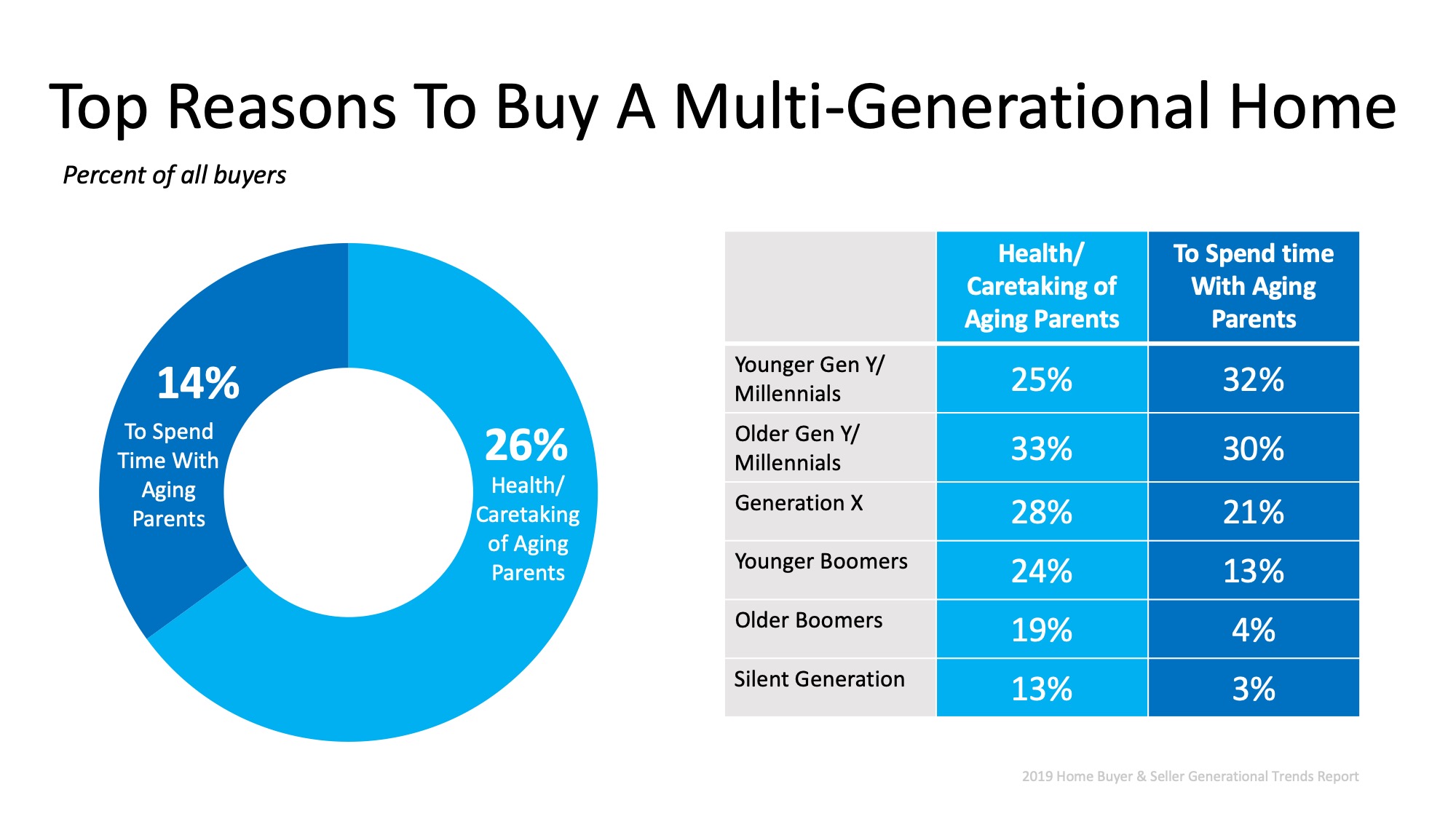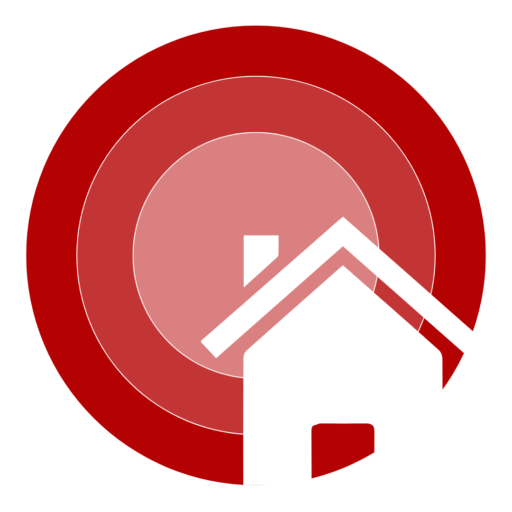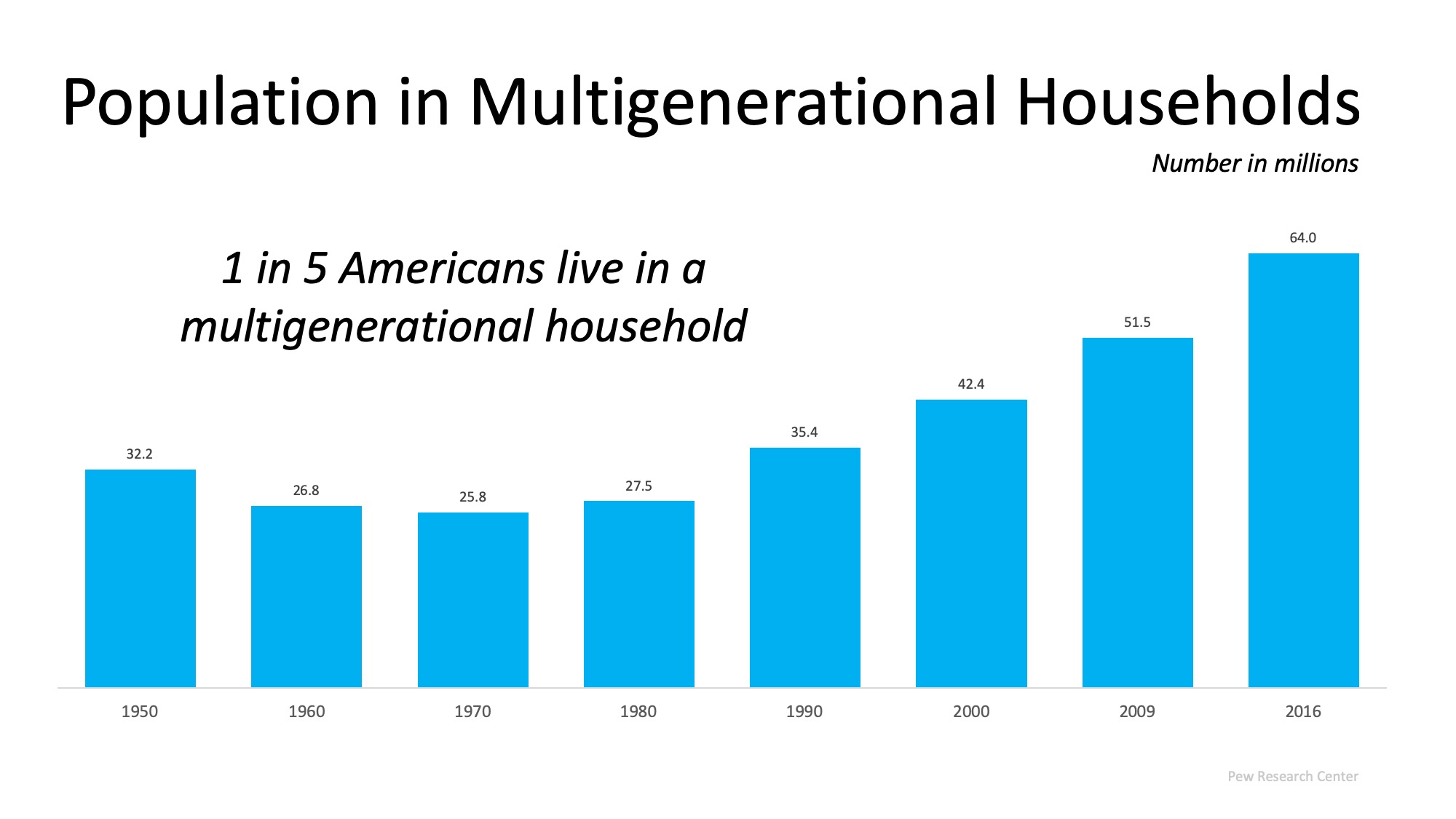
If you’re navigating the rising cost of housing in the Seattle real estate market, caring for aging parents, or looking for ways to bring your family closer together—Multi-Generational Homes may be the solution you didn’t know you were looking for.
Here in Seattle, more and more families are choosing to live under one roof, combining generations for emotional connection, caregiving support, and financial efficiency. Whether it’s grandparents moving in with their children, or adult kids coming home to save money, Multi-Generational Homes offer flexibility, affordability, and a deep sense of belonging.
And this isn’t just a passing trend. According to Pew Research Center, 1 in 5 Americans now live in a Multi-Generational Home—that’s over 64 million people. With housing prices climbing and caregiving needs growing, families are rethinking how they define “home”—and finding new ways to make it work.
In this article, we’ll explore why Multi-Generational Homes are becoming more popular in the Seattle real estate market, the benefits and trade-offs of this lifestyle, and how to buy or sell a home that fits this unique living arrangement. Whether you’re preparing to move aging parents in, helping your adult children get a leg up, or just want to explore your options—I’m here to guide you every step of the way.
What Is a Multi-Generational Home?
Multi-Generational Homes are residential properties where two or more adult generations live together under one roof. This can include:
- Aging parents moving in with their adult children
- Grown children returning home after college or job changes
- Grandparents, parents, and grandchildren sharing the same space
- Siblings and extended relatives living together for economic or cultural reasons
These homes often feature architectural flexibility—think separate entrances, in-law suites, or accessory dwelling units (ADUs)—to allow both privacy and shared living.
Seattle-Specific Example: In areas like Beacon Hill, Shoreline, and West Seattle, it’s common to find homes with finished daylight basements, detached garages that can be converted into ADUs, or older homes with layouts that lend themselves to multi-gen living.
As demand grows, more local builders are also offering multi-gen floor plans that include dual primary suites, second kitchens, and bonus spaces perfect for extended family members. It’s a trend that reflects not just changing needs—but changing values.
The Data Doesn’t Lie – This Trend Is Surging Nationwide
This isn’t just a Seattle trend—it’s a nationwide shift in how Americans are choosing to live. According to the Pew Research Center, as of 2016, 64 million Americans—about 1 in 5—lived in a Multi-Generational Home. That number has more than doubled since 1980, and it continues to climb as families adapt to economic realities, caregiving demands, and changing cultural values.
“This resurgence reflects a return to traditional living arrangements where multiple generations cohabitate to support one another—financially, emotionally, and practically.”
→ Source: NAR – Multigenerational Living: A New Take on an Old Tradition
This growth is especially visible in urban markets with high housing costs—like the Seattle real estate market—where families are finding creative ways to stay connected and reduce financial pressure.
And the interest is only accelerating: recent surveys show that 41% of Americans are currently considering buying a Multi-Generational Home, driven by affordability, caregiving needs, and the desire for more meaningful family time.
Why Multi-Generational Homes Are Gaining Popularity in Seattle
The rise of Multi-Generational Homes in the Seattle real estate market isn’t just about tradition—it’s a practical response to modern-day challenges. From rising housing prices to caregiving demands, families are discovering that living together can be both financially and emotionally rewarding.
Affordability in a High-Cost Market
Seattle continues to rank among the most expensive housing markets in the U.S. As of early 2024, the median home price in Seattle was over $830,000, and many buyers—especially younger generations—are priced out of purchasing alone. Multi-Generational Homes allow families to combine resources, share mortgage costs, and access homes they couldn’t afford independently. This is especially helpful for first-time buyers or adult children moving back home to save.
Caring for Aging Parents
In many Seattle households, adult children are bringing aging parents into the home. Whether due to declining health, rising assisted living costs, or simply wanting to stay close, multigenerational living offers a compassionate and cost-effective alternative.
“26% of buyers cited caregiving as their reason for buying a Multi-Generational Home.”
“14% said they simply want to spend more time with their aging parents.”

Shared Responsibilities = More Free Time
Busy Seattle families benefit from having more adults in the household. With multiple generations, it’s easier to share household duties like childcare, cooking, and transportation. This reduces the strain on working parents and fosters a true sense of community within the home.
“Multi-generational living is especially appealing to Millennials juggling young children and full-time work,” says the National Association of Realtors.
Emotional and Psychological Benefits
According to a study by the University of Oxford, children who are close to their grandparents have fewer emotional and behavioral problems and better coping skills during stressful life events like bullying or divorce.
Similarly, Boston College found that strong emotional bonds between grandparents and adult grandchildren reduced depressive symptoms in both groups.
Seattle’s Housing Stock Is Well-Suited
In areas like Shoreline, Beacon Hill, and South Seattle, you’ll find larger homes, basement apartments, and zoning that allows for Accessory Dwelling Units (ADUs)—making it easier to convert existing properties into functional Multi-Generational Homes.
Newer construction is also evolving. Builders are incorporating:
- Dual primary suites
- Separate entrances for privacy
- Attached or detached ADUs for flexibility
Together, these factors are making Multi-Generational Homes a strategic, loving, and forward-thinking choice in Seattle.
The Benefits and Challenges of Multi-Generational Living
Living in a Multi-Generational Home offers numerous advantages, but it also presents unique challenges. Understanding both aspects can help families make informed decisions about this lifestyle.
Benefits of Multi-Generational Homes
Emotional and Social Support
Families thrive when they stay connected. Grandparents can provide stability and emotional support to children, and adult children can offer companionship and care in return. The result is a deeply rooted family environment that supports well-being at every age.
Oxford University researchers found that children who are close to their grandparents have fewer emotional and behavioral problems and are better able to cope with stressful life events.
Source: Oxford Study – Oxford University Press
Boston College also found that emotionally close ties between grandparents and adult grandchildren reduce depressive symptoms in both groups.
Source: Boston College Research
Financial Benefits
By combining households, families can reduce per-person costs for mortgages, utilities, groceries, and transportation. This arrangement allows adult children to build savings while contributing to household expenses, and older adults may avoid costly assisted living facilities.
A Pew Research Center study found that Americans living in multigenerational households are less likely to be poor than those in other living arrangements, indicating a financial buffer against poverty.
Source: Pew Research Center
Shared Responsibilities and Caregiving
Whether it’s babysitting grandchildren, helping with school pickups, or supporting aging parents, Multi-Generational Homes provide flexibility and reduce dependence on outside services. This arrangement can significantly reduce stress and expense for caregivers.
According to a study by Generations United, 66% of those living in multigenerational households say the economic climate was a factor in their living arrangement, highlighting the practical benefits of shared responsibilities.
Source: Generations United
Enhanced Quality of Life
Families in Seattle are choosing this lifestyle not just for economic reasons—but for closeness, continuity, and a shared sense of purpose. Living with loved ones strengthens bonds, preserves family traditions, and improves day-to-day life for everyone involved.
A study published in the Journals of Gerontology found that healthy individuals living in two-generation households have longer survival rates than those living alone, suggesting a positive impact on longevity.
Source: National Center for Biotechnology Information
Flexible, Customizable Spaces
Modern homes are adapting. Many now include features like:
- Private suites for seniors
- Finished basements with kitchens or bathrooms
- Backyard cottages (DADUs) permitted in many Seattle neighborhoods
- Separate entrances and living areas to balance togetherness with privacy
Challenges to Consider
Privacy Concerns
More people under one roof can mean more noise, more overlap, and less personal space—unless the home is well-designed to accommodate that.
A report by Propmodo highlights that multigenerational living presents challenges such as clashing lifestyle preferences and lack of privacy, which can lead to conflicts if not properly managed.
Source: Propmodo
Zoning and Renovation Costs
Adding an ADU or modifying your home may require permits, zoning approvals, and upfront investments. Not every Seattle property is set up for easy conversion.
Relationship Boundaries and Conflict
When family members of different generations live together, it’s important to discuss roles, routines, and expectations upfront. Clear communication helps avoid misunderstandings or stress later.
A study published in The Guardian discusses the emotional toll and complexity of balancing care for aging parents and young children, highlighting the importance of setting boundaries to manage guilt and resentment.
Source: The Guardian
Space Requirements
The layout matters. Ideally, each generation should have their own bathroom and bedroom—and shared spaces like kitchens or laundry areas need to be functional and spacious.
When thoughtfully planned, the benefits of Multi-Generational Homes far outweigh the drawbacks. In my experience helping Seattle families make this transition, a well-chosen property, combined with good communication, makes all the difference.
What to Look for in a Multi-Gen Friendly Seattle Home
If you’re considering a Multi-Generational Home in the Seattle real estate market, the right layout and location can make all the difference. Whether you’re buying or remodeling, here are key features and neighborhood considerations that support comfort, privacy, and long-term livability for everyone under one roof.
Separate Living Spaces for Privacy
Look for homes that offer:
- Dual primary suites (especially with ground-floor access for seniors)
- Separate entrances or a private wing
- Finished basements or attic conversions
- Detached Accessory Dwelling Units (ADUs) or backyard cottages
These layouts help family members enjoy privacy while still staying close. Seattle has actively promoted ADU development in recent years to support housing flexibility.
Multiple Bathrooms and Kitchens
The ideal Multi-Generational Home includes at least two full bathrooms and, when possible, an additional kitchenette or full second kitchen. This setup makes daily life more convenient and reduces scheduling conflicts—especially in households with school-age kids and working adults.
According to the National Association of Home Builders (NAHB), 44% of homebuyers looking for multi-gen housing prioritize a second kitchen, and 53% look for separate entrances.
Accessibility and Safety Features
If you’re housing aging parents, make sure the home has:
- Wide doorways for walkers or wheelchairs
- Minimal or no stairs for main living areas
- Grab bars in bathrooms or easily adaptable space
- Well-lit hallways and entryways
Many homes in older Seattle neighborhoods like Wedgwood, Ballard, and Beacon Hill can be upgraded to meet these needs.
Flexible Zoning and Lot Size
Seattle’s zoning regulations can affect your ability to add or convert space for a Multi-Generational Home. Look for homes in areas with:
- RSL (Residential Small Lot) or LR (Lowrise) zoning
- Existing ADUs or legal potential to add one
- Larger lots for backyard cottages (DADUs)
Neighborhoods with favorable zoning for multi-gen living include parts of Shoreline, West Seattle, Rainier Valley, and Northgate.
Location That Supports All Generations
Your home’s location should work for everyone. That means:
- Proximity to medical care and pharmacies for older adults
- Good school districts and parks for younger kids
- Walkability, transit access, or nearby employment hubs for working adults
Tip: Look for homes near bus lines or light rail stations if multiple adults in the home need separate commutes.
How Builders and Sellers Are Responding to Multi-Gen Demand
As the demand for Multi-Generational Homes continues to rise, the Seattle real estate market is evolving. Builders and sellers alike are recognizing that today’s buyers are looking for more than just square footage—they need flexible spaces that accommodate a variety of living situations, including aging parents, returning adult children, or extended family members.
On the new construction side, builders are beginning to design floorplans specifically for multi-generational living. These homes may include dual primary suites, private entrances, en-suite bedrooms, second kitchenettes or wet bars, and even self-contained units with separate living areas. In some cases, national builders are marketing branded “NextGen” models designed for exactly this type of buyer. According to the National Association of Home Builders, demand for multigenerational homes increased by 15% between 2020 and 2023, driven by both affordability challenges and caregiving needs.
Sellers are adapting as well. In a market as competitive as Seattle, those who highlight features that appeal to multi-gen buyers can gain a strong advantage. Homes with finished daylight basements, bonus rooms that double as extra bedrooms, and separate entrances are being marketed specifically with extended families in mind. Even if a property wasn’t originally built for multi-generational living, small upgrades—like converting a basement or installing a kitchenette—can significantly increase its appeal. A recent Realtor.com survey found that 1 in 4 buyers today are actively searching for homes that can accommodate extended family members, showing just how mainstream this housing trend has become. Homes with flexible layouts also tend to hold long-term value. As family needs change over time, these spaces can be repurposed as guest suites, rental units, home offices, or aging-in-place solutions. Seattle’s more relaxed ADU and DADU regulations allow homeowners to legally add or convert space for this kind of use—often increasing resale value in the process.
Together, these trends show that the housing market is not only reacting to, but also reinforcing, the rise of Multi-Generational Homes in Seattle.
Is a Multi-Generational Home Right for You?
Multi-Generational Homes are more than just a housing trend—they’re a practical, flexible, and emotionally rewarding way to live. Whether you’re planning to care for aging parents, raise your children with more support, or combine households to save on costs, this lifestyle can offer the right mix of independence and connection.
That said, the key to success is preparation—choosing the right layout, location, and financing strategy is critical. As the Seattle real estate market evolves, homes that meet multi-gen needs are in high demand—and I’m here to help you take full advantage of the opportunity.
I’m Emily Cressey with HomePro Associates, and I specialize in helping buyers navigate the real estate market with confidence. Whether you’re ready to buy now or want to explore your options, I’m here to guide you through the process and help you make the best financial decision for your future. Let’s connect and start planning your next move!
Call me at (206) 578-3438 to schedule a consultation and get a professional analysis of your property’s worth.
Want more real estate tips and insights? Check out our YouTube channel for expert guidance, local market updates, and home tours.


